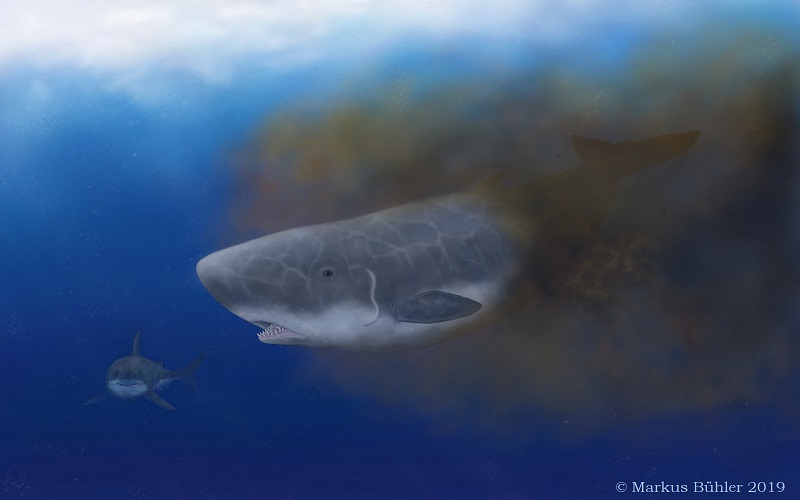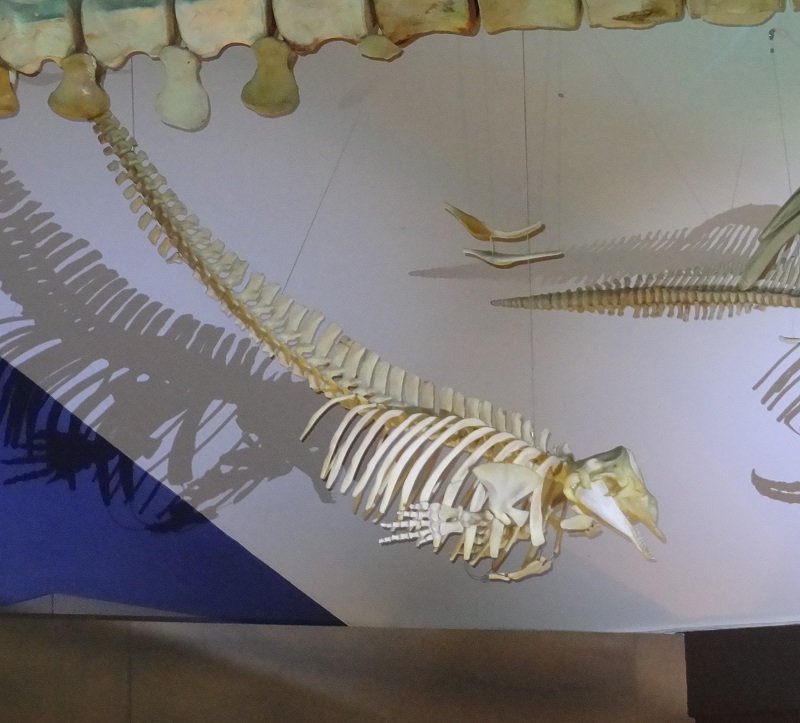Many animals have developed amazing anti-predator adaptions, from mimicry to the ability to autotomize certain parts of their own bodies. One of the most bizarre defense mechanisms among mammals is found in the two exant members of the genus Kogia, the pygmy sperm whale (Kogia breviceps) and the dwarf sperm whale (Kogia sima). This dolphin-sized relatives of the enormous sperm whale (Physeter macrocephalus) evolved a method to confuse predators which is…well… special.

Both pygmy and dwarf sperm whales are comparably slow and often bask motionless near the surface. This makes them an easy prey for predators like great white sharks or orcas, which were already found with Kogia remains in their stomaches. They were rarely and just very locally targeted by human hunting activities, for example off Japan, but their passive behavior on the surface made them also an easy target for whalers who could easily harpoon them from nearby boats. When harpooned, they were observed to emit a reddish-brown fluid from their anus which formed a cloud in the water. For this reason they are called Tsunabi in Japanese, a name that can be translated to something like „firecracker-whale“. Sometimes this fluid also leaks out of the anus of stranded specimens, what lead to their Sri Lankan name lie mulla, what means „blood dolphin“. The cloud formed by the dark fluid can apparantly be up to about 100 square meters in size.
This fluid is stored within an a unique sac-like bulging of the lower intestines which can hold up to about 12 l in large specimens of K. breviceps. The consistency of this reddish-brown fluid was compared with chocolate syrup (keep this in mind if you eat chocolate syrup for the next time…), but it can be also have a more granulous sand-like structure that dissolves in the water. Despite its location within the lower intestines it doesn´t seem to be just of fecal origin. It was already found in a foetal K. breviceps and a new-born and still un-nursed K. breviceps, what indicates that this substance which contains large amounts of carbon (up to more than 60%) is not just a digestion-by-product of their cephalopod-rich diet but is synthesized in the guts.

In one case a female K. sima and her calf were together with several dolphins accidentally caught in a net for tunas in the eastern tropical Pacific. The dwarf sperm whale emitted dark reddish fluid and tried to hide in the cloud whenever one of the dolphins approched it or the calf. This happened for several times, what also means that they usually don´t realease the full storage of intestinal fluid at once. This mechanisms, which appear to work in similar way as the inking of cephalopods, irritates the attackers optical and sensorical senses. This would also work in the dark waters at depths of 100 m and more where K. breviceps and K. sima usually hunt, because the olphactorical irritation would still work against sharks. I am not aware of any other depictions of the inking of Kogia, what also encouraged me to create an illustration of this bizarre behavior. Possibly it´s even the first published depiction, but I recently learnt that my good friend Julius Csotonyi also created somewhat earlier an illustration of this behavior for an upcoming book about cetaceans.
Here is also a video which shows a dwarf sperm whale which was chased by a fur seal at Hout Bay Harbour, Cape Town. The dwarf sperm whale released its gut fluid, which immediately produced a huge cloud within the surrounding water:
The reason why kogiids evolved this unusual defense mechanism is possibly linked to heavy predation, which could have an even more severe impact on their populations than we know from direct evidence. Pygmy and dwarf sperm whales have short life cycles and practice some sort of live-fast-die-young-way of life. They are sexually mature at 2,5-5 years, females have (unlike Physeter) a comparably large number of offspring during their lives and they ususally don´t live particularly long. This could also explain why they evolved such a special way to compensate their low speed and agility as a mean to escape from predators. Surprisingly, a similar behavior of releasing a cloud of „fluid“ was also recorded in Physeter as a response of stress, like approaching whalers or orcas. As they lack the sac-like bulge of Kogia to store a fluid, it´s likey that they really just release their feces however. This also indicates that this behavior have evolved already at comparably basal sperm whales.
Sources:
Ellis, Richard (2011). The Great Sperm Whale: A Natural History of the Ocean’s Most Magnificent and Mysterious Creature. Zoology. 179. USA: University Press of Kansas.
Plön S. The status and natural history of pygmy (Kogia breviceps) and dwarf (K. sima) sperm whales off southern Africa, PhD thesis. Grahamstown: Rhodes University; 2004.
Willis, P. M., and R. W. Baird. 1998. Status of the dwarf sperm whale, Kogia simus, with special reference to Canada. Can. Field-Nat. 112:114–125.

Dear Markus,
this is to inform you that I have translated your article about Kogia.
Really still amazed by their behaviour.
You can find the article on my blog at:
https://www.virginie-bouetel.com/sciences
Do not hesitate to tell me if I should modify something.
I hope you like it.
May thanks again for your permission and for the great story.
Best regards
Merci!